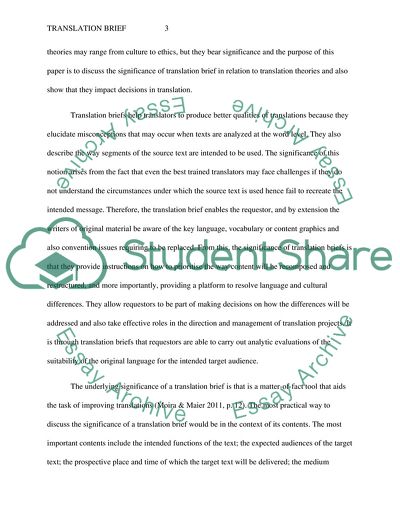Cite this document
(Translation Brief Essay Example | Topics and Well Written Essays - 3000 words, n.d.)
Translation Brief Essay Example | Topics and Well Written Essays - 3000 words. https://studentshare.org/humanitarian/1843610-discuss-the-significance-of-translation-brief-in-relation-to-translation-theories
Translation Brief Essay Example | Topics and Well Written Essays - 3000 words. https://studentshare.org/humanitarian/1843610-discuss-the-significance-of-translation-brief-in-relation-to-translation-theories
(Translation Brief Essay Example | Topics and Well Written Essays - 3000 Words)
Translation Brief Essay Example | Topics and Well Written Essays - 3000 Words. https://studentshare.org/humanitarian/1843610-discuss-the-significance-of-translation-brief-in-relation-to-translation-theories.
Translation Brief Essay Example | Topics and Well Written Essays - 3000 Words. https://studentshare.org/humanitarian/1843610-discuss-the-significance-of-translation-brief-in-relation-to-translation-theories.
“Translation Brief Essay Example | Topics and Well Written Essays - 3000 Words”. https://studentshare.org/humanitarian/1843610-discuss-the-significance-of-translation-brief-in-relation-to-translation-theories.


